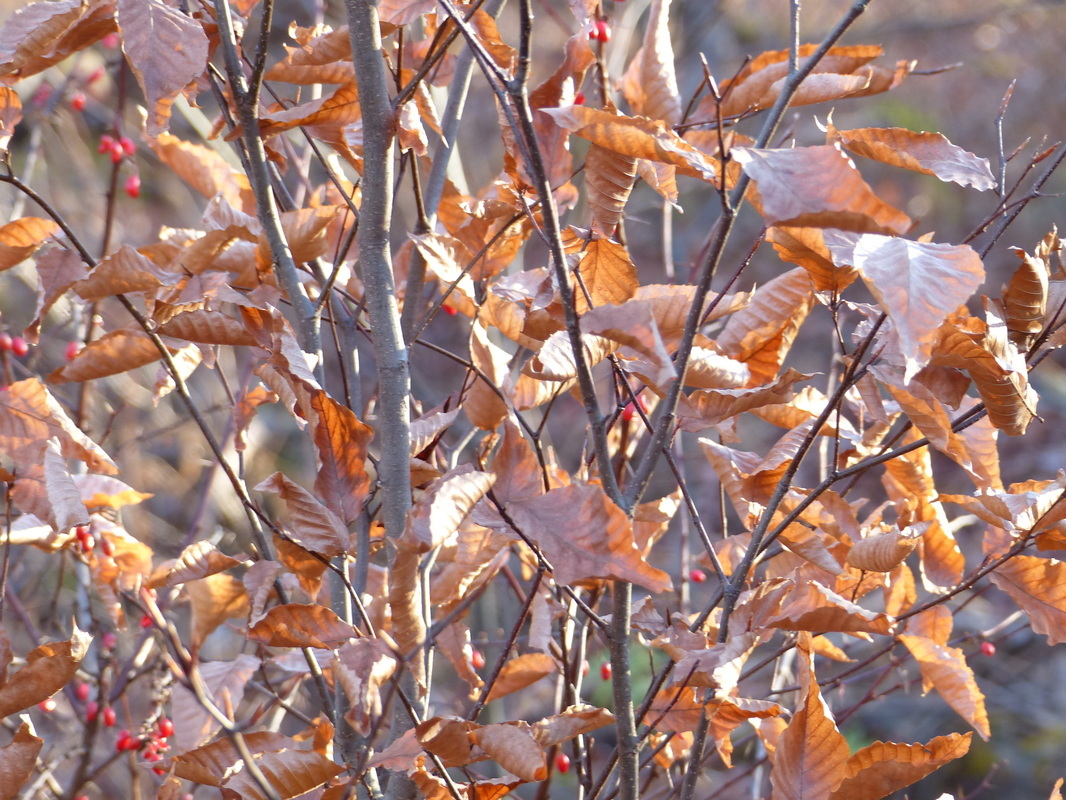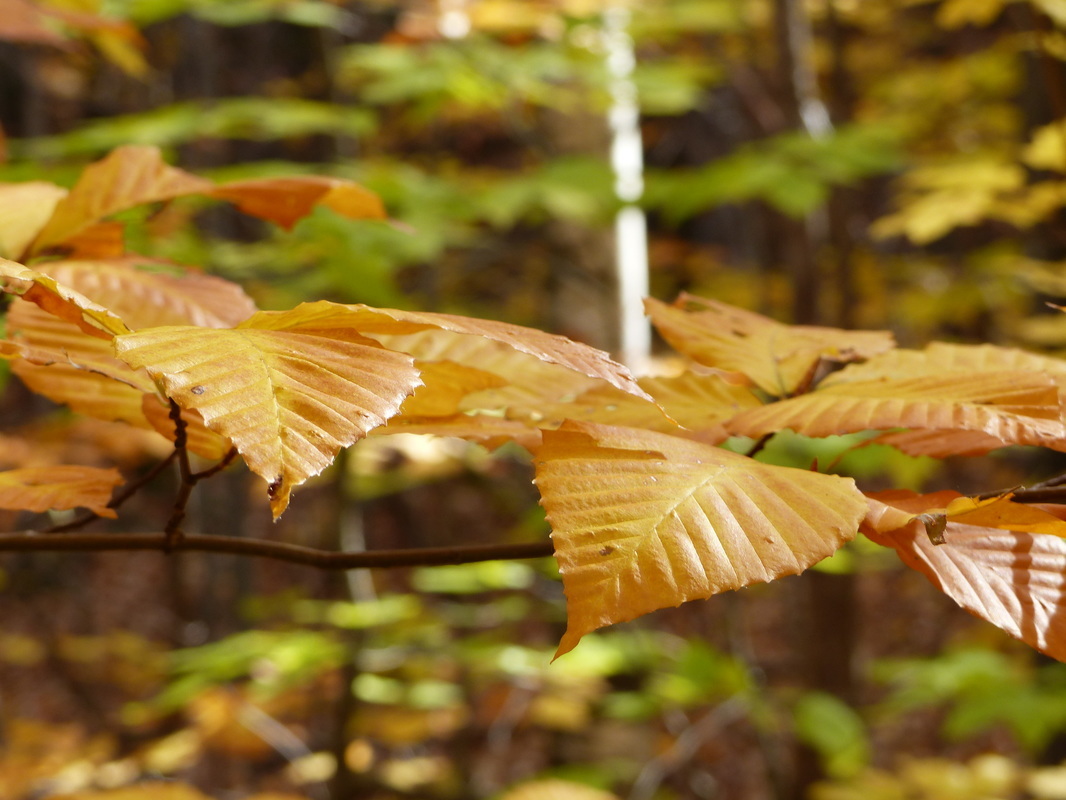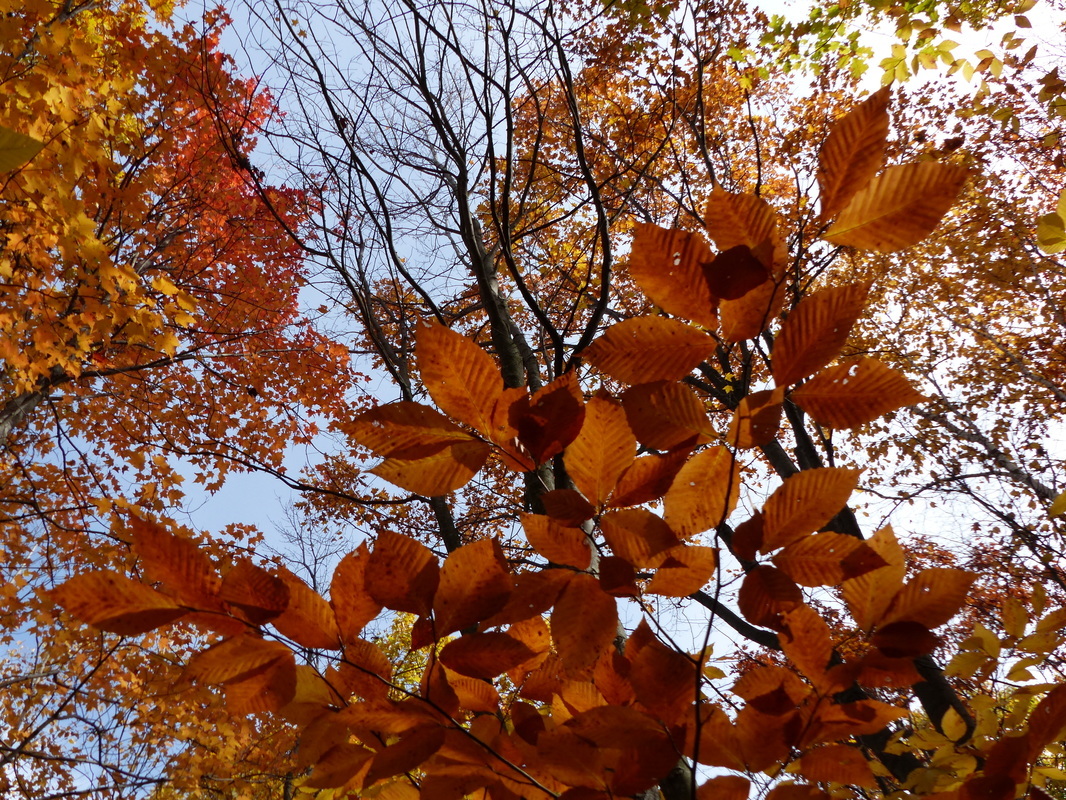American Beech, Fagus grandifolia, is a magnificent tree,
silvery-barked and elegant. The leaves are sharp-pointed ovals with
scalloped edges—pale green in spring, emerald in summer, golden in
autumn.
But in winter, beech leaves reveal an odd personality trait: they’re
stubborn. Long after most other deciduous trees have shed their colorful
foliage, beech leaves keep hanging onto the branch. They lose their
autumn color, turn brown, shrivel up - but stick stubbornly to the twig,
week after week, month after month. They just don’t know when it’s time
to quit.
The trait of keeping leaves after they’re dead is called marcescence (a word that is surely in the finals of all spelling bees.) Several other species of trees have this trait, too, most notably oaks, occasionally hornbeams and witch hazels. Why do some trees do this? The answer is…no one knows. As with most nature questions, this one has as many answers as there are websites. Botanists hotly debate the reasons why some trees hold on to their leaves till spring.
Some botanists suggest that marcescence is a habit that trees are in the process of losing. Perhaps they’re evolving on the way from evergreen-ness to deciduousness? Maybe someday in the distant future beech leaves will fall off like the maples and birches and all the rest.
Or is marcescence an adaptation for survival? Does it confer an advantage during bitter winters—a tiny bit of insulation against cold? Maybe the dead leaves act as a snow fence, trapping snowflakes near the twigs and providing an extra bit of moisture.
Often, marcescent leaves are on small, young trees or on lower branches of large trees. Perhaps the leaves lingered on the branches to provide one last little bit of photosynthesis as the leaves above fell off.
Or maybe—this seems likely—it protects twigs from winter munching by deer. Maybe it discourages insect damage. Or protects buds against frost.
Or maybe the answer is all of the above. No one knows for sure.
Beech trees are in trouble these days in the Northeast, battling a plague called beech bark disease. It’s caused by a tiny, soft-bodied bug called a scale insect (accidentally imported from Europe in the 1800s) that weakens the tree by feeding on the liquids of bark cells. The insect also spreads a deadly fungus from tree to tree. I’m seeing the sad sight of more and more dead beeches.
But even with the disease, individual trees can last a long time, sending out new shoots and branches, and leaves that hang on even when the game is up.
The brittle, dried beech leaves move in every breath of winter wind. They rattle and tap against each other, making a sound that’s hard to describe. Chattering teeth, perhaps? No, more like rain on the roof. Distant castanets. Or mice skittering. Whatever the reason for those papery skeletons of leaves, they are the music of winter.



